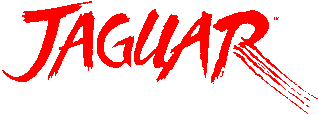|
|
|


Modifications for the Atari Jaguar
ANDY LIGHT'S JAGUAR ROTARY CONTROLLER INSTRUCTIONS
Parts needed: Atari Jaguar controller
Atari 2600 Driving Controller (NOT the paddles)
13 wires, preferably of separate colors
Buttons A board or box or shell to mount everything on/in
1. Open the driving controller by removing the two underside screws.Inside is a top-like device or a grey box with three wires coming out of it. This is the encoder. Pull the driving controller's knob off the encoder's shaft, then remove the encoder by unscrewing the nut that holds it in place. Disconnect the wires from the encoder.
2. Open the Jaguar controller. There are four screws on the bottom holding it together, behind the round rubber pads. Inside the controller are two circuit boards connected by a ribbon of wires. The bottom board is for the numeric keypad and is held by two screws. Remove the screws and take out the keypad.
3. Disconnect the wire ribbon from the keypad by melting the solder. CAREFUL! This is delicate work -- get help if you need it. Solder the thirteen wires where the ribbon connection was; do not confuse them.
4. From the left side of the board (the side that says "P2"), I've numbered the wires as follows:
1) Common 5) Button A 9) Button C 13) Down
2) Right 6) Button B 10) Pause
3) Option 7) Button B 11) Up
4) Option 8) Button C 12) Left
5. On the encoder, connect wire #1 to the center terminal, #2 to the right terminal, and #12 to the left terminal. The rotary part of the controller\par is now finished.
6. How to connect the other controls is up to you. I'm using arcade buttons, a thumbpad, and a switch (to toggle joypad or rotary control) mounted in an Atari 5200 trak-ball controller case. You can mount a\par joystick, extra buttons, or other features for your own controller. Buttons and empty control boxes are available at stores such as Radio Shack.
Wiring for the other signals are as follows:
Up - wires #1 and #11 Button A - wires #1 and #5
Down - wires #1 and #13 Button B - wires #6 and #7
Pause - wires #1 and #10 Button C - wires #8 and #9
Option - wires #3 and #4
Because wire #1 has multiple uses, you will either need to string it or\par split it for each destination.
7. Reassemble and mount everything according to your design. For better spin, you can glue lead fishing sinkers to the inside of the knob, and lubricate the shaft of the encoder with light oil or silicone lubricant.
That's it! Please forgive me for any mistakes in my grammer, terminology, spelling, etc. If you encounter any problems, feel free to e-mail me at\par ALIGHT55@AOL.COM. Good luck!
Copyright 2000 Robert Dutcher All Rights Reserved